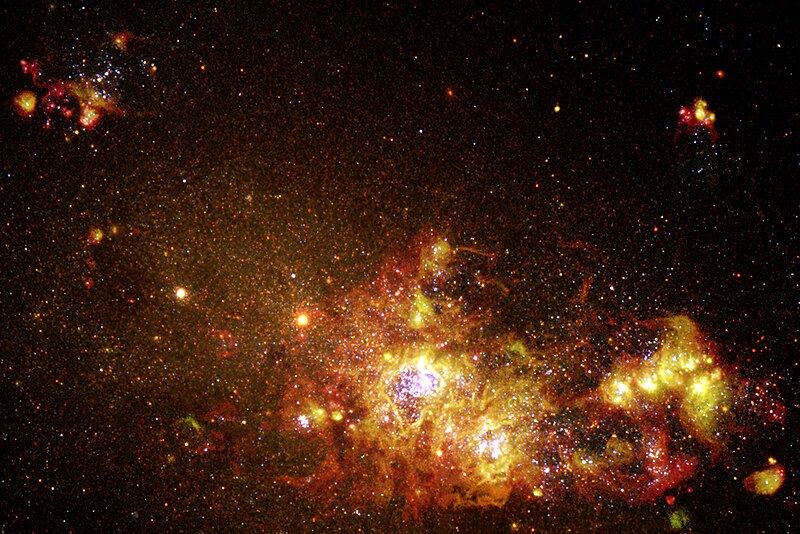Fichier:Fireworks of Star Formation Light Up a Galaxy - GPN-2000-000877.jpg

Gréisst vun dëser Duerstellung: 800 × 534 Pixel. Aner Opléisungen: 320 × 214 Pixel | 640 × 427 Pixel | 1.024 × 683 Pixel | 1.280 × 854 Pixel | 1.596 × 1.065 Pixel.
Original Fichier (1.596 × 1.065 Pixel, Fichiersgréisst: 1,67 MB, MIME-Typ: image/jpeg)
Versiounen
Klickt op e bestëmmten Zäitpunkt fir déi respektiv Versioun vum Fichier ze kucken.
| Versioun vum | Miniaturbild | Dimensiounen | Benotzer | Bemierkung | |
|---|---|---|---|---|---|
| aktuell | 00:41, 9. Abr. 2009 |  | 1.596 × 1.065 (1,67 MB) | BotMultichillT | {{Information |Description={{en|1=Located some 13 million light-years from Earth, NGC 4214 is currently forming clusters of new stars from its interstellar gas and dust. In this Hubble image, we can see a sequence of steps in the formation and evolution o |
Benotze vu Fichieren
Dës Säit benotzt dëse Fichier:
Globaalt Benotze vum Fichier
Dës aner Wikie benotzen dëse Fichier:
- Benotzt op af.wikipedia.org
- Benotzt op ar.wikipedia.org
- Benotzt op ast.wikipedia.org
- Benotzt op el.wikipedia.org
- Benotzt op en.wikipedia.org
- Benotzt op es.wikipedia.org
- Benotzt op eu.wikipedia.org
- Benotzt op fr.wikipedia.org
- Benotzt op hr.wikipedia.org
- Benotzt op id.wikipedia.org
- Benotzt op it.wikipedia.org
- Benotzt op ja.wikipedia.org
- Benotzt op ko.wikipedia.org
- Benotzt op mk.wikipedia.org
- Benotzt op nl.wikipedia.org
- Benotzt op no.wikipedia.org
- Benotzt op pl.wikipedia.org
- Benotzt op pt.wikipedia.org
- Benotzt op ro.wikipedia.org
- Benotzt op si.wikipedia.org
- Benotzt op sk.wikipedia.org
- Benotzt op sr.wikipedia.org
- Benotzt op tr.wikipedia.org
- Benotzt op uk.wikipedia.org
- Benotzt op vi.wikipedia.org
